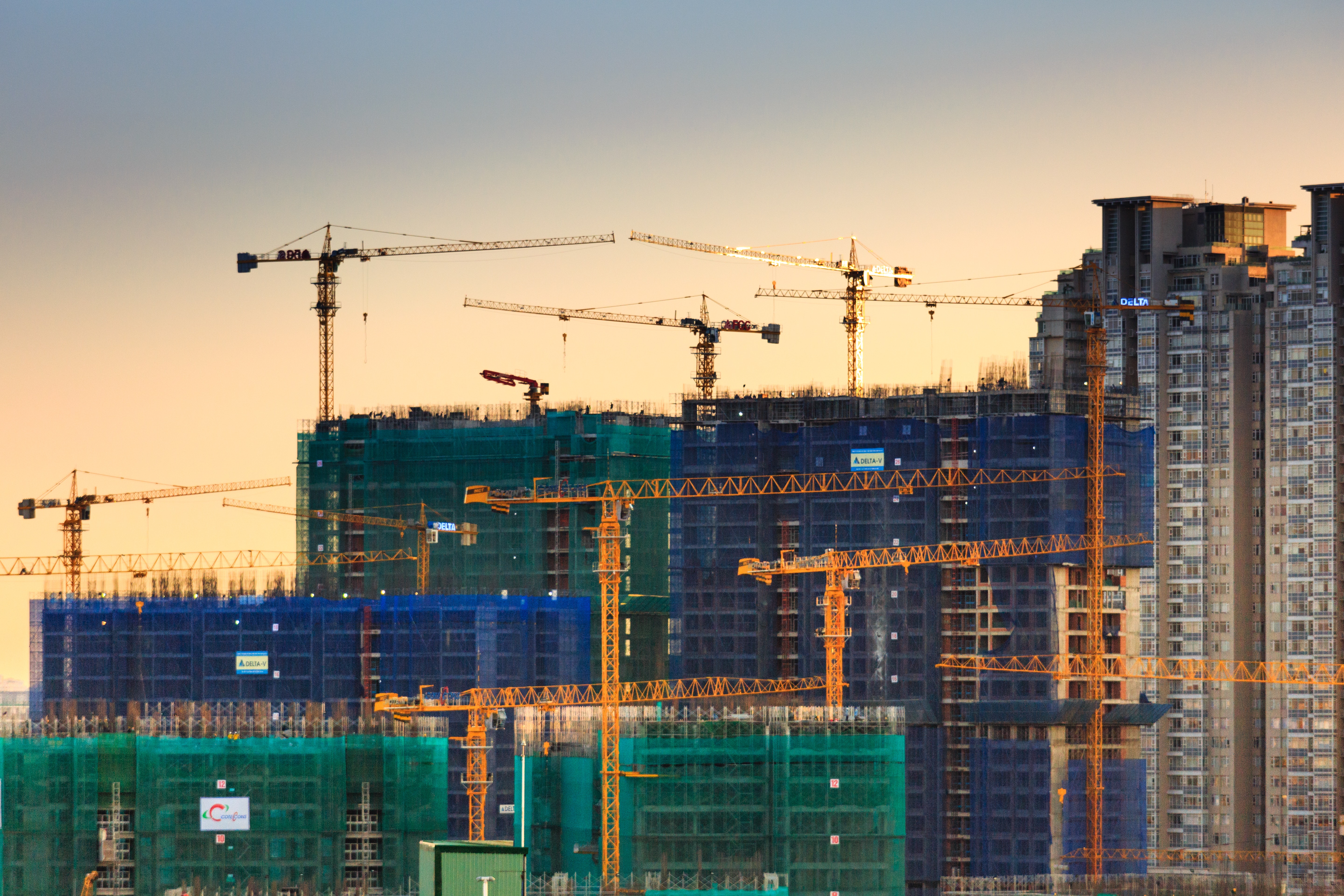The commercial construction industry has always gone through constant change and evolution. But rather than the slow glacial shifts of yesteryear, the sector is seeing emerging trends at a rate that we’ve arguably not experienced before.
Technology, responses to a global economic downturn, and a shift in how companies do business, have all contributed to these rapid transformations. We’re seeing it happen right now; the following six are, in our opinion, the most significant.
Green design and technology
The construction sector accounts for a huge portion of the globe’s carbon emissions. And it’s growing. Energy demands also continue to rise, with 1% growth since 2010.
Governments have begun to take more and more notice, resulting in policy that is putting increasing pressure on the construction industry to use green design and technology. The main policy aim is to improve energy efficiency by investing in low-carbon heating and cooling technologies. UK Government invested US $2.2m in building solar plants in Kenya, that will cut down carbon emissions from the private and business sector.
Amsterdam’s ‘The Edge’ is a good example of what commercial construction companies are attempting to achieve long-term. Dubbed the smartest office space on the planet, The Edge is a zero-energy building. It uses intelligent ventilation systems, solar electricity, and efficient LED lighting. Levels of humidity, temperature, and light are all controlled by smart technology, reducing any waste and improving overall performance.
Open coworking offices
The day of companies operating out of a single and exclusive space are numbered. Startups and small businesses, in particular, are no longer interested in expensive long-term office rental, but flexible, connected, and open coworking spaces. In Europe alone, demand is expected to grow 30% in the next five years. Jones Lang Lasalle (JLL) has described the demand for coworking offices as “one of the biggest shifts in the property industry”.
This change is also being felt in the developing world. Countries such as India offer an illustrative example of this rising demand. While the country’s offices have traditionally been dominated by the IT sector, companies in healthcare, biotech, and real estate construction are now seeking to occupy coworking office space.
Improved safety practices
The average construction site is not the safest of places. Construction-related accidents and deaths have been on a worrying increase for several years, which has caused the industry to respond with improved safety measures. Governments are also adding layers of protection to workers, pushing companies to follow more stringent regulations and procedures.
Technology is undoubtedly helping in this. For example, some construction companies have begun using so-called ‘smart work boots’ with inbuilt GPS systems. This allows supervisors to track workers, spot accidents, and act more quickly and efficiently. Other technologies such as drones are also changing how a construction site operates.
Modular construction
Prefabrication and modular construction methods are making offsite construction an increasingly popular option for the commercial building industry. The benefits are obvious:
- Cuts costs. Companies can operate at scale, allowing the nearest thing we have to assembly line production.
- Safety. Construction sites are notoriously dangerous. Modular construction helps create safer environments for workers.
- Work to a tight deadline. Using a controlled environment that isn’t affected by weather or other similar issues, construction companies can ensure they can meet tight building deadlines.
- Energy efficiency. We’ve already mentioned how the construction industry is attempting to go green. Modular construction is part of this wave.
Labor shortages
If you’re a construction worker, finding work shouldn’t be too difficult, especially if you live in a developed country. Australia, for example, is struggling to find skilled laborers for on-site construction. The reasons for this phenomenon are difficult to pinpoint, but it’s clear that young people are increasingly opting for office-based careers.
We can also expect a significant reduction in immigrant labor. Consider political divisions in countries such as the UK, where we’re beginning to see the effects of Brexit on the construction industry. While the demand for construction will likely increase, matching it may be an issue due to labor shortages.
Automation technology
Construction workers needn’t fear: automation will not take away your jobs anytime soon. Considering the aforementioned labor shortages, however, companies are investing in how automation can help bridge the gap. Estimates show that automation may be able to do the work of 2.7 million construction workers by 2057.
Industry leaders are attempting to give the repetitive and redundant tasks to robots, allowing construction workers to focus on skilled work. It essentially gives greater importance to expertise, creativity, and the ability to think outside the box.
An example of automation is Construction Robotics’ semi-automated mason (SAM for short!), a robotic solution that works alongside a human worker to alleviate the physical toll of on-site construction work. It can lay up to 400 bricks per hour, compared to a human’s 500 per day!
The way offices work is seeing a major shift, green technology is at the forefront of public interest, and automation technology will have a tremendous impact on the economy. It’s abundantly clear that the next five years will see numerous changes in commercial construction.
